Category: Archives
Saturday, April 1, 2023
AI Chatbots Don’t Care About Your Social Norms
 Jacob Browning and Yann Lecun in Noema:
Jacob Browning and Yann Lecun in Noema:
With artificial intelligence now powering Microsoft’s Bing and Google’s Bard search engines, brilliant and clever conversational AI is at our fingertips. But there have been many uncanny moments — including casually delivered disturbing comments like calling a reporter ugly, declaring love for strangers or rattling off plans for taking over the world.
To make sense of these bizarre moments, it’s helpful to start by thinking about the phenomenon of saying the wrong thing. Humans are usually very good at avoiding spoken mistakes, gaffes and faux pas. Chatbots, by contrast, screw up a lot. Understanding why humans excel at this clarifies when and why we trust each other — and why current chatbots can’t be trusted.
Getting It Wrong
For GPT-3, there is only one way to say the wrong thing: By making a statistically unlikely response to whatever the last few words were. Its understanding of context, situation and appropriateness concerns only what can be derived from the user’s prompt. For ChatGPT, this is modified slightly in a novel and interesting way. In addition to saying something statistically likely, the model’s responses are also reinforced by human evaluators: The system outputs a response, and human evaluators either reinforce it as a good one or not (a grueling, traumatizing process for the evaluators). The upshot is a system that is not just saying something plausible, but also (ideally) something a human would judge to be appropriate — if not the right thing, at least not offensive.
But this approach makes visible a central challenge facing any speaker — mechanical or otherwise. In human conversation, there are countless ways to say the wrong thing…
More here.
Democracy’s Missing Link
 David Van Reybrouk in Noema:
David Van Reybrouk in Noema:
Here is what it might look like: At the polling station during the next general election, you get not one but two ballot papers. The first is your usual list of candidates and their political parties. The second is something new — a document with 30 different proposals that you are invited to analyze, one after the other.
Underneath each idea it says “strongly disagree,” “disagree,” “agree,” “strongly agree,” etc. It feels like one of those online questionnaires you’ve seen many times before.
At the bottom of the form, you are invited to highlight the five proposals you care about most. Every citizen in your country on voting day would be looking at the same list and doing what you are doing in the voting booth: rating and ranking proposals. The goal is to establish a list of shared priorities.
The process looks like a referendum, a process you might’ve participated in before. But where a referendum asks you for a straight yes or no answer to a certain question, this new process — this preferendum — has a much richer interface for indicating your policy preferences. You get to translate your individual preferences into the collective priorities of your community.
Of course, you would’ve been able to see the list of proposals before. You would know it had not been defined by government officials or competing political parties, but by a random sample of citizens who had been working on it for months. You would know, too, that this random group of citizens had been given a mandate by the government to draft proposals as they saw fit.
More here.
Mass Destruction
 Daniel Bessner in Boston Review:
Daniel Bessner in Boston Review:
Americans live in a very limited democracy. I don’t tell the Federal Reserve to raise interest rates; I don’t decide where the government puts my money; and I sure as hell didn’t vote to go to war in Iraq. Many of the most consequential decisions lie outside the purview of ordinary Americans, who have few means by which to make their voices heard in the corridors of power. This is by design. As numerous historians have shown, in the twentieth century’s second half U.S. elites constructed a state that intentionally restricts the ability of ordinary people to shape policy. Though they might disagree about a lot, the powerful in both political parties agree that, on most things, the public cannot be trusted.
This attitude is especially entrenched when it comes to foreign policy. Since World War II, elites have insisted that U.S. foreign affairs are simply too complex, and the public too volatile and too ignorant, for average Americans to have a say in its formation. As political scientist Gabriel Almond declared in 1950, “the gravest general problem confronting policy-makers is that of the instability of mass moods,” which made it very difficult to promote a stable foreign policy. Moreover, as Almond clarified several years later, when it came to world affairs “often the public is apathetic when it should be concerned, and panicky when it should be calm.” For Almond and many who came after him, a public-directed foreign policy was guaranteed to be a foolish and ineffective one.
More here.
No Alternative?
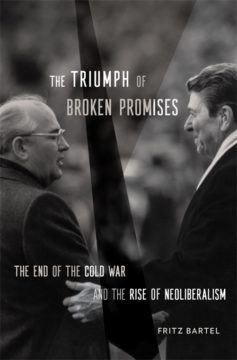 Max Krahé in Phenomenal World:
Max Krahé in Phenomenal World:
The Triumph of Broken Promises by Fritz Bartel is a new history of the end of the Cold War. Challenging conventional narratives that focus on Reagan’s military-ideological assertiveness or Gorbachev’s openness to reform, the book gives a material and structural explanation of Western victory and Eastern defeat.1 This makes for fascinating history: finance and energy emerge as silent but vital battlegrounds, unlikely connections—like those between Japanese investors and Hungarian central bankers—come to the fore, and several East-West similarities surprise the reader.
More than just fascinating history, however, the book makes a profound theoretical contribution. It demonstrates the importance of two institutional features of democratic capitalism, which state socialism lacked: the polity-economy distinction and competitive elections. It also highlights the importance of neoliberal ideology, providing certain Western policymakers with a framework to justify and even praise the unraveling of social democratic Keynesianism, while Eastern leaders struggled in vain to legitimize a similar turn to austerity within state socialism.
These features help explain why the West won the Cold War, and why this victory coincided with–and was in part fueled by—the rise of neoliberalism. In tracing their impact, the book also speaks to a set of wider questions: what is the nature of capitalism’s recent crises? What are the implications for progressive politics today? And is capitalism vs. socialism even the most useful framework for discussing these questions?
More here.
Hags: The Demonisation of Middle-Aged Women
Fiona Sturges in The Guardian:
 In the US comic Amy Schumer’s sketch Last Fuckable Day, Schumer is out walking when she comes across a picnic. There, three actors – Julia Louis-Dreyfus, Tina Fey and Patricia Arquette – are celebrating Louis-Dreyfus’s last day of being “believably fuckable” in the eyes of the entertainment industry. “If you shoot a sex scene the night before your birthday everyone’s, like, ‘Hurry up, hurry up, we’ve got to get it before midnight’ because they think your vagina is going to turn into a hermit crab’,” Fey tells Schumer.
In the US comic Amy Schumer’s sketch Last Fuckable Day, Schumer is out walking when she comes across a picnic. There, three actors – Julia Louis-Dreyfus, Tina Fey and Patricia Arquette – are celebrating Louis-Dreyfus’s last day of being “believably fuckable” in the eyes of the entertainment industry. “If you shoot a sex scene the night before your birthday everyone’s, like, ‘Hurry up, hurry up, we’ve got to get it before midnight’ because they think your vagina is going to turn into a hermit crab’,” Fey tells Schumer.
I kept thinking of this while reading Hags, Victoria Smith’s account of the way older women are treated by a society that deems them unsightly and past their sell-by date. In discussing the precedents and structures behind this unholy collision of ageism and misogyny, the book draws on Snow White, the Malleus Maleficarum (a German treatise on witchcraft), Fatal Attraction (featuring Glenn Close’s fabled “bunny boiler”) plus the work of feminist theorists and campaigners such as Andrea Dworkin, Adrienne Rich and Gloria Steinem. From “Karens” (the entitled middle-aged complainers demanding to see the manager) to witches (read: sexless, embittered, ugly), Smith examines the thriving stereotypes used to sideline and vilify older women, often by young people who call themselves feminists. She recalls the New Yorker cartoon depicting a Puritan delivering a speech as a woman is about to be burned as a witch. “Let me start by saying no one is a bigger feminist than me,” he says.
More here.
The Subversive Art of Phillis Wheatley
Kerri Greenidge in The New York Times:
 It’s a testament to Black endurance and brilliance that the little girl called Phillis Wheatley became, within 12 years of her arrival in Boston, the most significant African American poet of the 18th century. Yet, as the historian David Waldstreicher shows in “The Odyssey of Phillis Wheatley,” his thoroughly researched, beautifully rendered and cogently argued biography, Wheatley is brilliant not merely because she survived and composed some of the most important works of trans-Atlantic literature. Rather, Waldstreicher insists, Wheatley was a supremely gifted neoclassical practitioner of language, an “organic intellectual of the enslaved.”
It’s a testament to Black endurance and brilliance that the little girl called Phillis Wheatley became, within 12 years of her arrival in Boston, the most significant African American poet of the 18th century. Yet, as the historian David Waldstreicher shows in “The Odyssey of Phillis Wheatley,” his thoroughly researched, beautifully rendered and cogently argued biography, Wheatley is brilliant not merely because she survived and composed some of the most important works of trans-Atlantic literature. Rather, Waldstreicher insists, Wheatley was a supremely gifted neoclassical practitioner of language, an “organic intellectual of the enslaved.”
…Waldstreicher asks us to appreciate the sarcasm in Wheatley’s lines. He suggests that she was well acquainted with a trans-Atlantic Methodism that deemed an “abominable hypocrisy” the widely accepted notion of the slave trade as a path for Africans to salvation. In her poem, Wheatley doesn’t reinforce the notion of African inferiority; she challenges it. This is apparent in the final two couplets: “Some view our sable race with scornful eye,/‘Their colour is a diabolic die.’/Remember, Christians, Negroes, black as Cain,/May be refin’d, and join th’ angelic train.” These couplets, Waldstreicher argues, are “the real point, set up by the first four lines that seem to bathe enslavement in evangelical glory, something white folks might want to believe.”
In portraying Wheatley as an often subversive artist who understands and talks back to the racial assumptions of her time, Waldstreicher refuses to take the white Wheatleys at their word.
More here.
Moral Skepticism – Philippa Foot
The Odd Couple That Saved Yosemite
Mary Ann Gwinn at the LA Times:
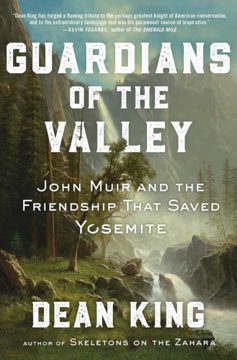 John Muir and Robert Underwood Johnson were unlikely allies in the war to preserve Yosemite. Muir, son of a Scripture-quoting Scottish immigrant father, was raised poor on a Wisconsin farm, but he wrote and spoke with the fervor of a prophet, and his craggy visage, tough constitution and unshakable devotion to the natural world drew admirers like a magnet. The urbane and cultured Johnson was an insider with a vast network of contacts in publishing and politics. The editor of one of the country’s preeminent magazines, Johnson hosted New York literary salons, mingled with America’s elite and eventually became the U.S. ambassador to Italy.
John Muir and Robert Underwood Johnson were unlikely allies in the war to preserve Yosemite. Muir, son of a Scripture-quoting Scottish immigrant father, was raised poor on a Wisconsin farm, but he wrote and spoke with the fervor of a prophet, and his craggy visage, tough constitution and unshakable devotion to the natural world drew admirers like a magnet. The urbane and cultured Johnson was an insider with a vast network of contacts in publishing and politics. The editor of one of the country’s preeminent magazines, Johnson hosted New York literary salons, mingled with America’s elite and eventually became the U.S. ambassador to Italy.
It was improbable that they even met — Muir was on the West Coast, Johnson on the East.
more here.
The Tricky Thing With Humanism
Jennifer Szalai at the New York Times:
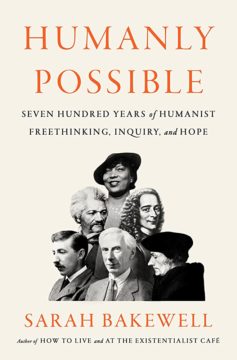 “I am human, and consider nothing human alien to me”: The famous line from the Roman playwright Terence, written more than two millenniums ago, is easy to assert but hard to live by, at least with any consistency. The attitude it suggests is adamantly open-minded and resolutely pluralist: Even the most annoying, the most confounding, the most atrocious example of anyone’s behavior is necessarily part of the human experience. There are points of connection between all of us weirdos, no matter how different we are. Michel de Montaigne liked the line so much that he had the Latin original — Homo sum, humani nihil a me alienum puto — inscribed on a ceiling joist in his library.
“I am human, and consider nothing human alien to me”: The famous line from the Roman playwright Terence, written more than two millenniums ago, is easy to assert but hard to live by, at least with any consistency. The attitude it suggests is adamantly open-minded and resolutely pluralist: Even the most annoying, the most confounding, the most atrocious example of anyone’s behavior is necessarily part of the human experience. There are points of connection between all of us weirdos, no matter how different we are. Michel de Montaigne liked the line so much that he had the Latin original — Homo sum, humani nihil a me alienum puto — inscribed on a ceiling joist in his library.
But as Sarah Bakewell notes in her lively new book, “Humanly Possible,” Terence wrote the line as a joke. It’s said by a busybody character after being asked why he cannot seem to keep his nose out of everybody else’s beeswax.
more here.
Friday, March 31, 2023
America Doesn’t Know Tofu
George Stiffman in Asterisk:
 Guiyang didn’t have many restaurants, per se. The metropolis was more of a city-wide night market. Even in the pre-COVID days, streets like Qingyun Road were only half-filled with cars, to leave room for tents and tables that stretched to the horizon, and for smoke and steam that rose into the clouds. Eateries didn’t burden you with 14-page menus, common at Shanghainese or Northeastern restaurants. No — a làoguō 烙锅 shop sold laoguo (think Korean BBQ with more vegetables, cooked over a clay pot dome). A sīwáwa 丝娃娃 shop sold siwawa (shreds of 20-plus varieties of fresh and pickled vegetables that you roll into a thin, rice cake-like taco). And tofu stands sold tofu. But probably not the tofu you’re thinking of.
Guiyang didn’t have many restaurants, per se. The metropolis was more of a city-wide night market. Even in the pre-COVID days, streets like Qingyun Road were only half-filled with cars, to leave room for tents and tables that stretched to the horizon, and for smoke and steam that rose into the clouds. Eateries didn’t burden you with 14-page menus, common at Shanghainese or Northeastern restaurants. No — a làoguō 烙锅 shop sold laoguo (think Korean BBQ with more vegetables, cooked over a clay pot dome). A sīwáwa 丝娃娃 shop sold siwawa (shreds of 20-plus varieties of fresh and pickled vegetables that you roll into a thin, rice cake-like taco). And tofu stands sold tofu. But probably not the tofu you’re thinking of.
Pale slabs of bean curd shivered over a sputtering steel grill box. As their tops bathed in the cool summer air, their bottoms tensed and colored. When Auntie flipped over a piece, the tofu’s underside was purplish like a black eye, its thick skin waxy and crackly like a fried egg bottom. And then it started expanding.
More here.
If AI scaling is to be shut down, let it be for a coherent reason
Scott Aaronson in Shtetl-Optimized:
 There’s now an open letter arguing that the world should impose a six-month moratorium on the further scaling of AI models such as GPT, by government fiat if necessary, to give AI safety and interpretability research a bit more time to catch up. The letter is signed by many of my friends and colleagues, many who probably agree with each other about little else, over a thousand people including Elon Musk, Steve Wozniak, Andrew Yang, Jaan Tallinn, Stuart Russell, Max Tegmark, Yuval Noah Harari, Ernie Davis, Gary Marcus, and Yoshua Bengio.
There’s now an open letter arguing that the world should impose a six-month moratorium on the further scaling of AI models such as GPT, by government fiat if necessary, to give AI safety and interpretability research a bit more time to catch up. The letter is signed by many of my friends and colleagues, many who probably agree with each other about little else, over a thousand people including Elon Musk, Steve Wozniak, Andrew Yang, Jaan Tallinn, Stuart Russell, Max Tegmark, Yuval Noah Harari, Ernie Davis, Gary Marcus, and Yoshua Bengio.
Meanwhile, Eliezer Yudkowsky published a piece in TIME arguing that the open letter doesn’t go nearly far enough, and that AI scaling needs to be shut down entirely until the AI alignment problem is solved—with the shutdown enforced by military strikes on GPU farms if needed, and treated as more important than preventing nuclear war.
Readers, as they do, asked me to respond. Alright, alright. While the open letter is presumably targeted at OpenAI more than any other entity, and while I’ve been spending the year at OpenAI to work on theoretical foundations of AI safety, I’m going to answer strictly for myself.
Given the jaw-droppingly spectacular abilities of GPT-4—e.g., acing the Advanced Placement biology and macroeconomics exams, correctly manipulating images (via their source code) without having been programmed for anything of the kind, etc. etc.—the idea that AI now needs to be treated with extreme caution strikes me as far from absurd. I don’t even dismiss the possibility that advanced AI could eventually require the same sorts of safeguards as nuclear weapons.
More here.
Life expectancy continues to decline in the U.S. as it rebounds in other countries
Selena Simmons-Duffin at NPR:
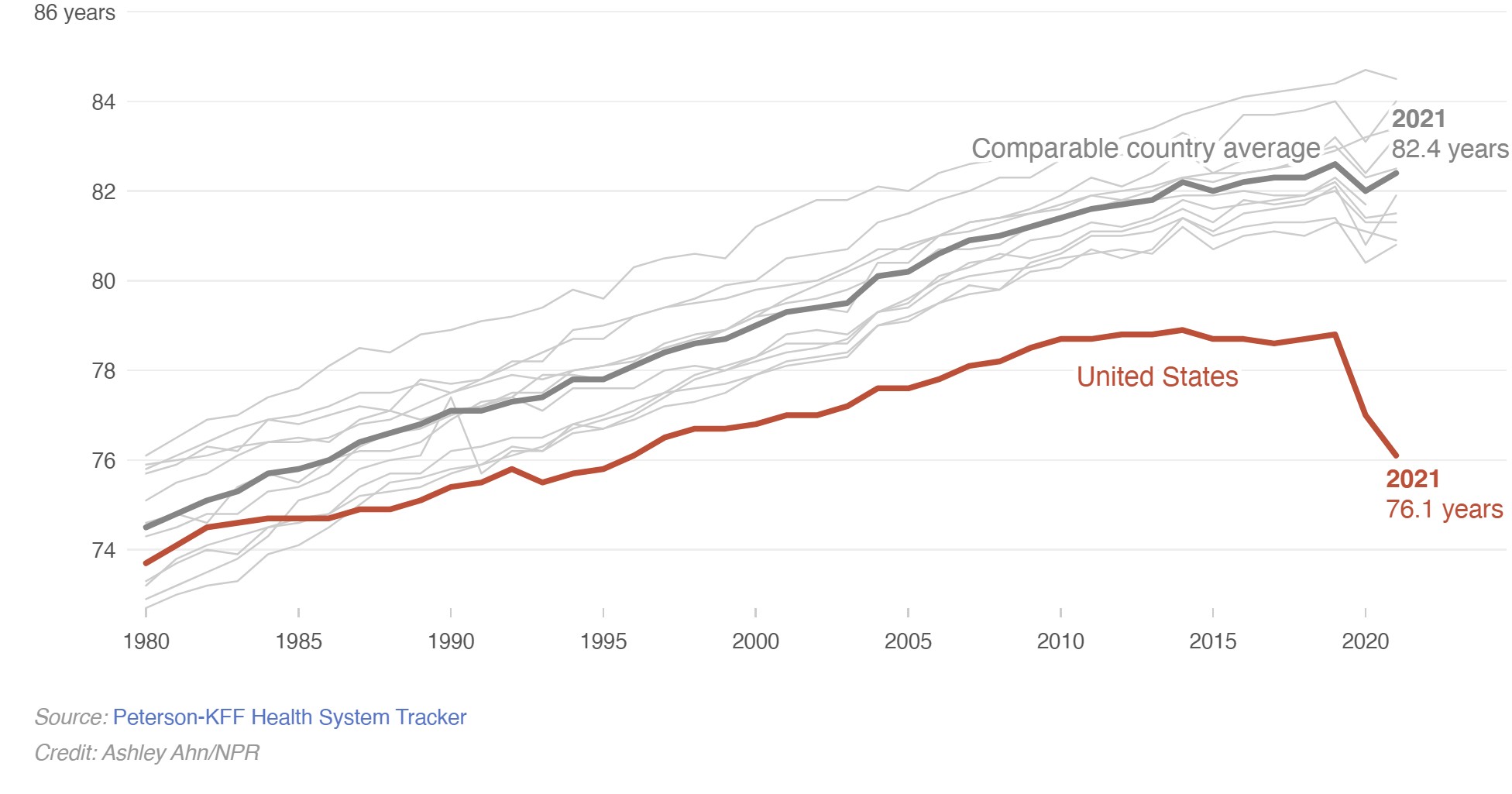 Just before Christmas, federal health officials confirmed life expectancy in America had dropped for a nearly unprecedented second year in a row – down to 76 years. While countries all over the world saw life expectancy rebound during the second year of the pandemic after the arrival of vaccines, the U.S. did not.
Just before Christmas, federal health officials confirmed life expectancy in America had dropped for a nearly unprecedented second year in a row – down to 76 years. While countries all over the world saw life expectancy rebound during the second year of the pandemic after the arrival of vaccines, the U.S. did not.
Then, last week, more bad news: Maternal mortality in the U.S. reached a high in 2021. Also, a paper in the Journal of the American Medical Association found rising mortality rates among U.S. children and adolescents.
“This is the first time in my career that I’ve ever seen [an increase in pediatric mortality] – it’s always been declining in the United States for as long as I can remember,” says the JAMA paper’s lead author Steven Woolf, director emeritus of the Center on Society and Health at Virginia Commonwealth University. “Now, it’s increasing at a magnitude that has not occurred at least for half a century.”
Across the lifespan, and across every demographic group, Americans die at younger ages than their counterparts in other wealthy nations.
More here.
Comfortably Numb Solo: Pink Floyd Cover by Lex Fridman
Dark Matter: Pierre Soulages and Pierrette Bloch
Molly Warnock at Artforum:
 I’ve found myself thinking a lot about that epigraph in the wake of two back-to-back events this past October. One was Soulages’s death at age 102, the other a visit to the monographic room recently devoted to Pierrette Bloch (1928–2017) at the Musée d’Art Moderne de Paris (MAM). Comprising eight objects from between 1974 and 1999, all belonging to the museum’s permanent collection, the focused presentation offered a welcome opportunity to think broadly about a singularly poetic body of work exhibited regularly in Europe but rarely in the US. Particularly in the wake of Soulages’s death, however, it also invites fresh consideration of the two artists’ longtime dialogue. Introduced in 1949 by Bloch’s art professor Henri Goetz, the pair were friends for nearly seven decades, and their lives and oeuvres were closely intertwined. Early in her career, Bloch used a spare room in Soulages’s house as her studio, and each collected work by the other. Slightly older than the artists of Supports/Surfaces but avowedly attentive to their investigations, Bloch developed a similarly expanded practice of painting, moving beyond the stretched canvas support to engage a broad array of nontraditional and often notably humble materials. Her work brilliantly illuminates both the fecundity and the limits of the “materiological” Soulages brought to the fore through Segalen’s striking image of signs woven in stone.
I’ve found myself thinking a lot about that epigraph in the wake of two back-to-back events this past October. One was Soulages’s death at age 102, the other a visit to the monographic room recently devoted to Pierrette Bloch (1928–2017) at the Musée d’Art Moderne de Paris (MAM). Comprising eight objects from between 1974 and 1999, all belonging to the museum’s permanent collection, the focused presentation offered a welcome opportunity to think broadly about a singularly poetic body of work exhibited regularly in Europe but rarely in the US. Particularly in the wake of Soulages’s death, however, it also invites fresh consideration of the two artists’ longtime dialogue. Introduced in 1949 by Bloch’s art professor Henri Goetz, the pair were friends for nearly seven decades, and their lives and oeuvres were closely intertwined. Early in her career, Bloch used a spare room in Soulages’s house as her studio, and each collected work by the other. Slightly older than the artists of Supports/Surfaces but avowedly attentive to their investigations, Bloch developed a similarly expanded practice of painting, moving beyond the stretched canvas support to engage a broad array of nontraditional and often notably humble materials. Her work brilliantly illuminates both the fecundity and the limits of the “materiological” Soulages brought to the fore through Segalen’s striking image of signs woven in stone.
more here.
An Interview With Pierre Soulages
How Christopher Wren built Britain
Michael Prodger at the New Statesman:
 If there is one part of one building that is quintessential Christopher Wren it is not the dome of St Paul’s Cathedral, or the ceremonial river frontage of the Royal Naval Hospital at Greenwich, nor even any of the infinitely various steeples of his city churches, but the base of the Monument.
If there is one part of one building that is quintessential Christopher Wren it is not the dome of St Paul’s Cathedral, or the ceremonial river frontage of the Royal Naval Hospital at Greenwich, nor even any of the infinitely various steeples of his city churches, but the base of the Monument.
The structure, a fluted column erected to commemorate the Great Fire of London, was built between 1671 and 1677 and stands both 202 feet high and 202 feet from Pudding Lane, the place where the conflagration started. The gaze of passers-by is inevitably drawn upwards to the flaming golden urn at the top that represents both the disaster and the city’s resurgence. But for Wren and his co-designer, Robert Hooke, mere memorialising was just one part of their intention. They constructed the Monument to be both a zenith telescope and a laboratory: looking up its tubular interior they could observe and measure the position of the stars (the topping urn was hinged so that it could be opened to the sky); looking down it they could experiment with pendulums and gravity. The two men would collate and analyse their findings in a research space beneath the column.
more here.
Friday Poem
At Sea
……………talking with Perschke on the fantail. I ask him
“What time do you go on lookout?”
—“When the sun sets. But I can’t tell tonight, it’s
… cloudy.”
—” In Japan in the Buddhist temples they ring the evening
… bell when it gets so dark you can’t see the lines in
… your hand when you’re sitting in your room.”
—“Full length of up close?”
—“Full length I guess.”
—“Suppose you got a long arm. Maybe you’re late. Are the
… windows open?”
—“Always.”
—”Sometimes they’re closed.”
—”Can’t always ring it at the right time, huh? What do
… they ring it for anyway?”
—“Wake people up.”
—“But that’s in the evening.”
—“They ring it in the morning too.”
by Gary Snyder
from Earth House Hold
McClelland and Stewart, Ltd., 1969
Paradigms Gone Wild
Steven Shapin in London Review of Books:
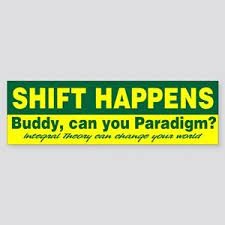 The tragedy of Thomas Kuhn’s life was to have written a great book. The Structure of Scientific Revolutions was published in 1962, when he was forty, and he spent the rest of his life distressed by its success. It has sold 1.7 million copies, and has been translated into 42 languages. Very few academic books sell in those numbers and scarcely any are still seen as state of the art sixty years after publication. Structure crosses disciplines. It is read by historians, sociologists and philosophers whose business is thinking about what science is and how it changes, and also by scientists with a reflective turn of mind. It is read by theologians pondering the differences and similarities between science and religion, and by anthropologists considering the characteristics of ‘Western’ and ‘non-Western’ thought. The book has insinuated itself into everyday language. Kuhn plucked the word ‘paradigm’ from linguistics – where it referred to the permutation of forms having a common root, like the conjugation of verbs or the declension of nouns – and repurposed it as the term for a key regulative resource in scientific inquiry, a concrete model of ‘the right way to go on’. Eventually, lots of things meant to be thought of as ‘innovative’ and ‘good’ were branded as ‘paradigm shifts’: new ways of producing factory-farmed chicken, the latest solution to the difficulties posed by Brexit for trade arrangements in Northern Ireland, the emergence of celebrity chef culture.
The tragedy of Thomas Kuhn’s life was to have written a great book. The Structure of Scientific Revolutions was published in 1962, when he was forty, and he spent the rest of his life distressed by its success. It has sold 1.7 million copies, and has been translated into 42 languages. Very few academic books sell in those numbers and scarcely any are still seen as state of the art sixty years after publication. Structure crosses disciplines. It is read by historians, sociologists and philosophers whose business is thinking about what science is and how it changes, and also by scientists with a reflective turn of mind. It is read by theologians pondering the differences and similarities between science and religion, and by anthropologists considering the characteristics of ‘Western’ and ‘non-Western’ thought. The book has insinuated itself into everyday language. Kuhn plucked the word ‘paradigm’ from linguistics – where it referred to the permutation of forms having a common root, like the conjugation of verbs or the declension of nouns – and repurposed it as the term for a key regulative resource in scientific inquiry, a concrete model of ‘the right way to go on’. Eventually, lots of things meant to be thought of as ‘innovative’ and ‘good’ were branded as ‘paradigm shifts’: new ways of producing factory-farmed chicken, the latest solution to the difficulties posed by Brexit for trade arrangements in Northern Ireland, the emergence of celebrity chef culture.
A New Yorker cartoon shows tramps leaning against a wall: ‘Good news – I hear the paradigm is shifting.’ Another has two men, their clothes billowing out in the wind, speculating that there must have been a ‘paradigm shift’. You can buy a bumper-sticker: ‘Shift Happens: Buddy Can You Paradigm?’
More here.
Bathing Through the Ages: 1300–1848
Clare Watson in The Scientist:
 In medieval times, long before there were bathrooms in private homes, bathing was a social affair. Visitors to Dutch and German bathhouses in the late Middle Ages emerged from such spaces cleansed of more than just their grime: They also received basic medical care from “baders,” bathhouse proprietors who were also licensed health practitioners, skilled at lancing abscesses and pulling teeth. Steam rooms, mineral baths, cupping, and herbal concoctions were also commonly used to alleviate ailments from scabies and leprosy to migraines and miscarriages.
In medieval times, long before there were bathrooms in private homes, bathing was a social affair. Visitors to Dutch and German bathhouses in the late Middle Ages emerged from such spaces cleansed of more than just their grime: They also received basic medical care from “baders,” bathhouse proprietors who were also licensed health practitioners, skilled at lancing abscesses and pulling teeth. Steam rooms, mineral baths, cupping, and herbal concoctions were also commonly used to alleviate ailments from scabies and leprosy to migraines and miscarriages.
Not until Victorian times would bathhouses become a little noticed but influential item in public health policies. But according to Janna Coomans, a historian at Utrecht University in the Netherlands who studies public health in medieval cities, bathhouses provided access to more affordable medical care as baders charged less than doctors for their services. Sweating, bloodletting, and lancing were attempts to correct an imbalance in the four “humors”—phlegm, blood, yellow bile and black bile—that were thought to cause ill health. While these practices may seem unhygienic by modern standards, bathhouses enabled “a large part of the population to maintain health and hygienic norms, according to their ideas of health,” Coomans says.
More here.
